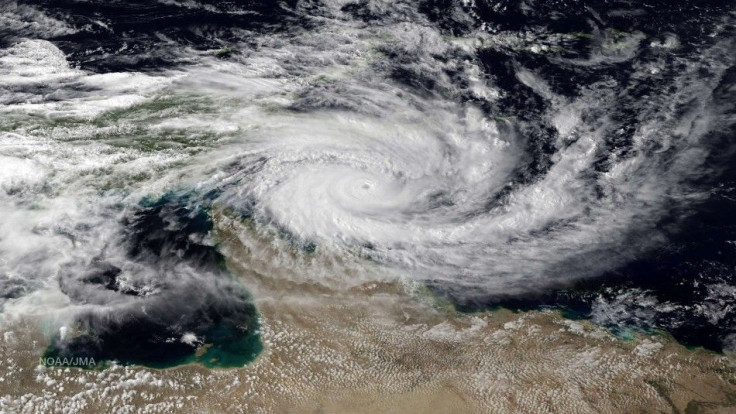Global Warming Pushing Pacific Tropical Cyclones Away from Equator Going Toward the Poles; Hong Kong, Taiwan, Shanghai, Japan and South Korea at Risk

A new NOAA-led study released by US researchers has presented a glimpse of potentially more droughts to countries near the equator. It found global warming is pushing Pacific tropical cyclones away from the equator going toward the poles, potentially risking Japan and Korea peninsula and other regions with generally larger populations during cyclone season.
The study found tropical cyclones, regardless of size, have been peaking 33 miles (53 kilometers) farther north in the Northern Hemisphere and 38 miles (61 kilometers) farther south in the Southern Hemisphere in the last 30 years. The seeming moving away movement happens every 10 years.
"The storms en masse are migrating out of the tropics," James Kossin of the National Climatic Data Center and the University of Wisconsin as well as study lead author said.
Simply put, the poleward movement puts more people at risk, especially in the Northern Hemisphere, "because you're going to hit more population areas," Bill Rankin, Yale University historian and cartographer, told AP.
Consequently, as tropical cyclones move into higher latitudes, "some regions closer to the equator may experience reduced risk, while coastal populations and infrastructure pole-ward of the tropics may experience increased risk," the National Oceanic and Atmospheric Administration said in statement in its Web site.
"With their devastating winds and flooding, tropical cyclones can especially endanger coastal cities not adequately prepared for them."
Cyclones that used to hit their strongest around the same latitude as the northern Philippines are now peaking closer to Hong Kong, Taiwan, Shanghai, Japan and South Korea, Kossin said.
Taiwan, Hong Kong, Shanghai and Tokyo have a combined population reaching at least 60 million.
"The tropics are becoming less hospitable" for these storms, Kossin said. "The higher latitudes are becoming less hostile."
Additionally, regions in the tropics that depend on cyclones' rainfall to help replenish water resources may be at risk for lower water availability as the storms migrate away from them.
NOAA said the amount of poleward migration varies by region, but the greatest migration so far has been found in the northern and southern Pacific and South Indian Oceans.





















